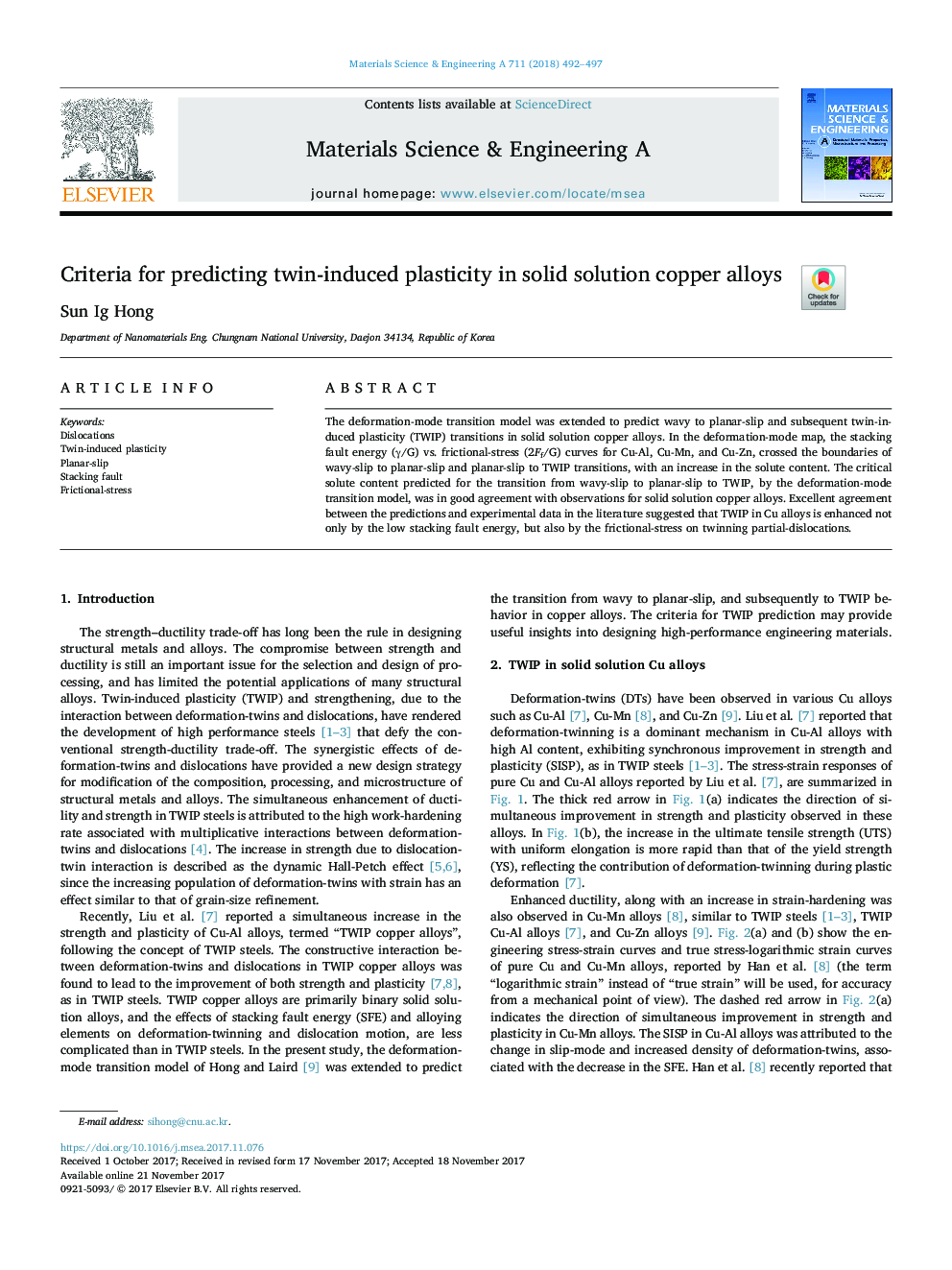| Article ID | Journal | Published Year | Pages | File Type |
|---|---|---|---|---|
| 7974324 | Materials Science and Engineering: A | 2018 | 6 Pages |
Abstract
The deformation-mode transition model was extended to predict wavy to planar-slip and subsequent twin-induced plasticity (TWIP) transitions in solid solution copper alloys. In the deformation-mode map, the stacking fault energy (γ/G) vs. frictional-stress (2Ff/G) curves for Cu-Al, Cu-Mn, and Cu-Zn, crossed the boundaries of wavy-slip to planar-slip and planar-slip to TWIP transitions, with an increase in the solute content. The critical solute content predicted for the transition from wavy-slip to planar-slip to TWIP, by the deformation-mode transition model, was in good agreement with observations for solid solution copper alloys. Excellent agreement between the predictions and experimental data in the literature suggested that TWIP in Cu alloys is enhanced not only by the low stacking fault energy, but also by the frictional-stress on twinning partial-dislocations.
Keywords
Related Topics
Physical Sciences and Engineering
Materials Science
Materials Science (General)
Authors
Sun Ig Hong,
